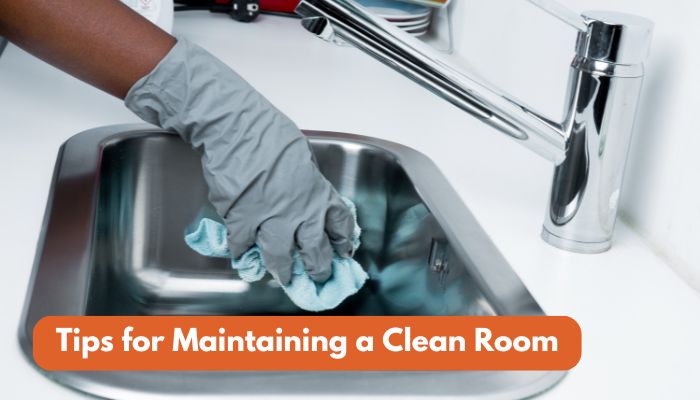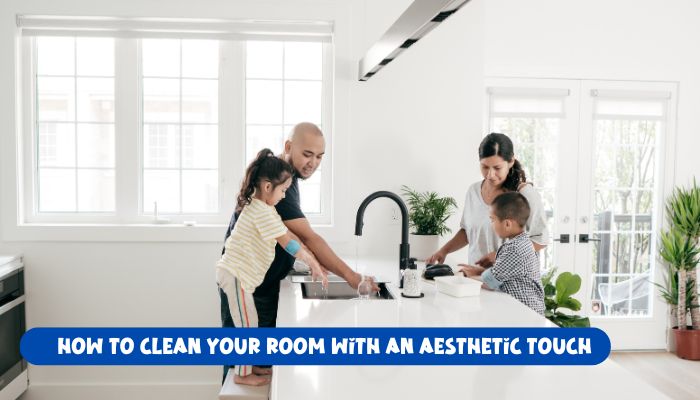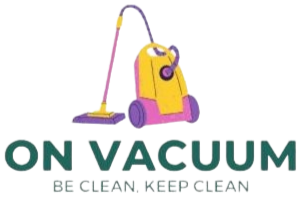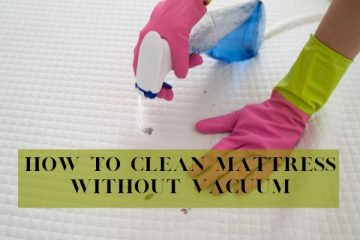Maintaining a clean room is not just about keeping an organized space; it enhances aesthetic enjoyment, health, and mental well-being. A clean and tidy environment reduces stress and anxiety, providing a sense of peace and order that can improve overall mental health. Furthermore, reducing clutter and maintaining cleanliness minimizes dust and allergens, which are crucial for those suffering from respiratory issues or allergies. By keeping spaces clean, individuals also decrease the likelihood of pests, contributing to a healthier living environment. This guide aims to transform a chaotic room into a peaceful sanctuary, ensuring that the space is visually pleasing and a conducive environment for relaxation and productivity.
Preparing to Clean
Before embarking on the cleaning process, it is essential to gather all necessary supplies to ensure an efficient and effective cleaning session. Begin by assembling essential cleaning tools such as dusters, vacuum cleaners, mops, cleaning agents, and garbage bags. Each of these plays a pivotal role:
- Dusters remove dust from surfaces.
- Vacuum cleaners handle carpets and floors.
- Mops are used for wet cleaning of hard surfaces.
- Cleaning agents help remove stains and sanitize surfaces.
- Garbage bags are used to dispose of all collected waste.
Additionally, consider optional items like microfiber cloths, which are excellent for trapping dirt and minimizing scratches on sensitive surfaces, and gloves to protect your hands from harsh chemicals and dirt.
After assembling your cleaning supplies, creating a cleaning checklist is the next critical step. This checklist serves as a roadmap through the cleaning process, ensuring every area is noticed and the task is systematically completed. A well-organized checklist should categorize tasks by room or type of cleaning required—such as dusting, vacuuming, and washing surfaces. For example, the checklist might start with removing items that do not belong in the room, dusting ceiling fans and light fixtures, wiping down surfaces and sweeping and mopping the floors. This systematic approach keeps you organized and makes the task less overwhelming, as you can visually track your progress and focus on one task at a time.
The Cleaning Process

Decluttering Your Space
The first and often most challenging step in cleaning your room is decluttering. Start by sorting all items into specific categories: items to trash, items to keep, items to donate, and items to relocate. This method helps decide what to do with each piece, reducing the overall clutter. Boxes or bins labelled according to these categories should be used for effective organization during this process. Place items immediately into the appropriate bins as you go through your belongings. This clears space and provides visual progress for your decluttering efforts, encouraging you to continue.
Dusting and Wiping Surfaces
Once the clutter is out, dust downwards from the top of the room. This ensures that dust dislodged from higher surfaces does not re-contaminate cleaned lower surfaces. Use a microfiber cloth or a duster to gently wipe surfaces, starting with ceiling fans, lampshades, and shelves and progressing to furniture and baseboards. For cleaning agents, consider eco-friendly options like diluted vinegar or specialized green products that effectively remove dust and allergens without leaving harmful residues. Such agents are better for the environment and safer for people with allergies.
Sweeping and Vacuuming
After dusting, sweeping is your next step. Use a good broom to sweep all the challenging floor areas, gathering dirt or debris into a dustpan. Follow sweeping with vacuuming, which picks up finer particles and is particularly effective on carpets and rugs. Use the appropriate vacuum attachments for different surfaces, such as a brush attachment for hardwood floors, to prevent scratches. Vacuum systematically, starting from one corner of the room and making your way to the exit, ensuring no spot is missed.
Mopping and Cleaning Floors
The final touch to the floor cleaning process is mopping. Choose a mop and cleaning solution appropriate for your flooring type. For example, use a gentle cleaner on hardwood and a more robust solution on tile. Begin mopping from the furthest corner of the room, moving backwards towards the door to avoid stepping on the cleaned areas. For streak-free results, replace the mop water frequently to prevent re-depositing dirt onto the floor. Consider using a microfiber mop or a steam mop for efficient cleaning that sanitizes the floor, leaving your room clean and hygienically clean.
These detailed steps in the cleaning process ensure that every part of your room receives attention, transforming it into a clean, pleasant, and inviting space.
Organizing Post-Cleaning
Once the cleaning process is complete, the next vital step is to organize your space effectively. Organizing isn’t just about making your room look neat; it’s about creating a system that allows you to maintain order with minimal effort. Start by sorting your items based on their utility and frequency of use. Everyday items should be easily accessible, while seasonal items or those used infrequently can be stored away. Consider utilizing under-bed storage, over-the-door organizers, or vertical shelving units to maximize space. For clothing, adopting the KonMari method—folding clothes to stand upright—can provide both a neat appearance and easy access in drawers. Remember, the goal of this phase is to ensure that every item has a ‘home’ which not only enhances the room’s aesthetics but also simplifies future cleaning efforts by reducing the chances of clutter accumulation.
Tips for Maintaining a Clean Room

Maintaining a clean room is an ongoing process that requires commitment and consistency. Developing daily and weekly habits can ease the burden of cleaning and ensure your room remains pleasant and tidy. Daily habits include:
- Making your bed each morning.
- Managing dirty clothes immediately by placing them in a hamper or setting them aside for washing.
- Doing a quick tidy-up before bedtime to reset the space.
Weekly tasks could involve more thorough activities such as dusting, vacuuming, and changing bed linens. The key to sustaining cleanliness is integrating these tasks into your routine. Hence, they become second nature rather than a chore. Setting reminders or scheduling specific times for these activities can help reinforce these habits. Additionally, regular decluttering sessions—perhaps once a month—can prevent the accumulation of unnecessary items and make regular cleaning much more manageable. By sticking to these routines, you ensure that your room looks clean and supports a more organized and productive lifestyle.
How to Clean Your Room Fast – A Checklist
To clean your room quickly, being efficient and focused is crucial. Start by gathering all your cleaning supplies so you can move smoothly from one task to the next without interruptions. Begin with the functions that make the most visible difference. Make your bed first; it instantly tidies up the room’s appearance and provides a large surface for sorting or folding other items. Next, pick up clothes, books, and miscellaneous items from the floor and other surfaces. Use a basket to temporarily hold items that belong in different rooms. Vacuum or sweep right after decluttering to capitalize on your earlier efforts, ensuring you don’t have to double back. This approach is designed to make your room presentable in the shortest possible time.
How to Clean Your Room the Right Way
Cleaning your room effectively involves more than tidying up; it requires a systematic approach to address every corner. Start from the top of the room—dusting any ceiling fixtures, fans, or high shelves—and work your way down to prevent dust from settling on already cleaned areas. Use appropriate cleaners for different surfaces to avoid damage and achieve the best results. For instance, glass cleaners are used for mirrors and windows, and wood polish is used for furniture. Clean under furniture and all corners where dust and debris accumulate unnoticed. This detailed cleaning improves the room’s cleanliness and overall hygiene, making the space more enjoyable and healthful.
How to Clean Your Room Fast and Easy
For a fast and easy room cleaning, minimize the steps and focus on multitasking products. Use a damp microfiber cloth to clean multiple surfaces without frequent rinses or different products. Tackle visible clutter first; swiftly removing items from the floor and other surfaces can dramatically change the perception of your room’s cleanliness. Keep a garbage bag and a donation box handy to quickly decide about items you no longer need or want. After decluttering, a quick vacuum or sweep can suffice for floor cleaning, especially if you regularly maintain the room. This approach should not replace deep cleaning sessions but serves well for frequent, hassle-free cleanups.
How to Clean Your Room in a Fun Way
Turn room cleaning into a fun activity by incorporating some creativity and challenge. Play your favourite upbeat music or an engaging podcast to keep your spirits high while you work. You could also set up a timer and challenge yourself to get as much done as possible before it rings, turning cleaning into a game. Another idea is to invite a friend or family member to help, turning the cleaning session into a social event with snacks and a little reward, like watching a movie together in your newly cleaned space. These strategies can make cleaning feel less like a chore and more enjoyable.
How to Clean Your Room with an Aesthetic Touch

Cleaning your room with an eye for aesthetics involves more than tidying up; it’s about creating a visually appealing space that reflects your style. Begin by decluttering, but as you do, consider each item’s contribution to the room’s overall aesthetic. Use stylish storage solutions like decorative baskets or chic boxes to store items practically and attractively. Please pay attention to placing decorative items such as photos, artwork, and plants, ensuring they are dusted and arranged to enhance the room’s look. Choose cleaning products with pleasant scents that complement the atmosphere you want to create, like lavender or citrus, to leave your room clean and invitingly fresh.
Final Thoughts
Cleaning your room might initially seem daunting, but as we’ve explored in this guide, breaking it down into manageable steps can transform this chore into a simple and fulfilling activity. We started by preparing our cleaning tools and crafting a checklist to ensure every area was noticed. The cleaning process involved decluttering, dusting, sweeping, vacuuming, and mopping, each step building upon the previous to systematically clear out dirt and organize the space. After cleaning, organizing items and strategizing their placement ensures ongoing tidiness. Regular maintenance, guided by the cleaning checklist, helps maintain cleanliness over time. Remember, the benefits of a clean room extend beyond the visual appeal; it creates a serene environment that can enhance your mood and overall mental well-being. By consistently applying these steps, you can maintain a clean and inviting room as a peaceful sanctuary within your home.
FAQs
What supplies do I need to clean my room?
You’ll need basic cleaning supplies to clean your room effectively. These include a duster for removing dust from surfaces and hard-to-reach areas, a vacuum cleaner for carpets and floors, a mop for hard surfaces, and various cleaning agents tailored to the surfaces in your room. Don’t forget garbage bags for disposing of trash and recyclables. Microfiber cloths can also help efficiently clean glass and other smooth surfaces without leaving streaks.
How often should I clean my room?
The frequency of cleaning your room can vary based on your lifestyle and preferences. However, a good rule of thumb is to thoroughly clean once a week to keep your space fresh and tidy. Daily tidying, such as making your bed, putting away clothes, and quick dusting, can significantly prolong the cleanliness of your room and make your weekly cleanups less intensive.
What’s the best way to declutter?
Decluttering is most effective when approached with a plan. Sort items into categories like keep, donate, and discard. Use boxes or bins to organize these categories during the sorting process. This method clears your space and helps you identify what is essential and what can be let go. Decluttering becomes more accessible and more productive when you regularly reassess the items in your room, which helps prevent accumulation and keeps your space airy and open.
How can I maintain a clean room?
Maintaining a clean room is all about establishing habits that prevent disorder. Make your bed every morning to instantly tidy up the look of your room. Develop a habit of returning items to their designated places immediately after use. Implement a weekly cleaning schedule to tackle different areas progressively, preventing any task from becoming too overwhelming. When consistently followed, these simple routines can keep your room in a perpetual state of order and cleanliness.
Can cleaning my room improve my mood?
Yes, cleaning your room can significantly boost your mood. A tidy and organized space can reduce stress and anxiety, promoting a sense of well-being and control. Clean environments enhance focus and creativity by minimizing distractions caused by clutter. Moreover, the physical activity involved in cleaning can increase endorphin levels, further contributing to an improved mood.




